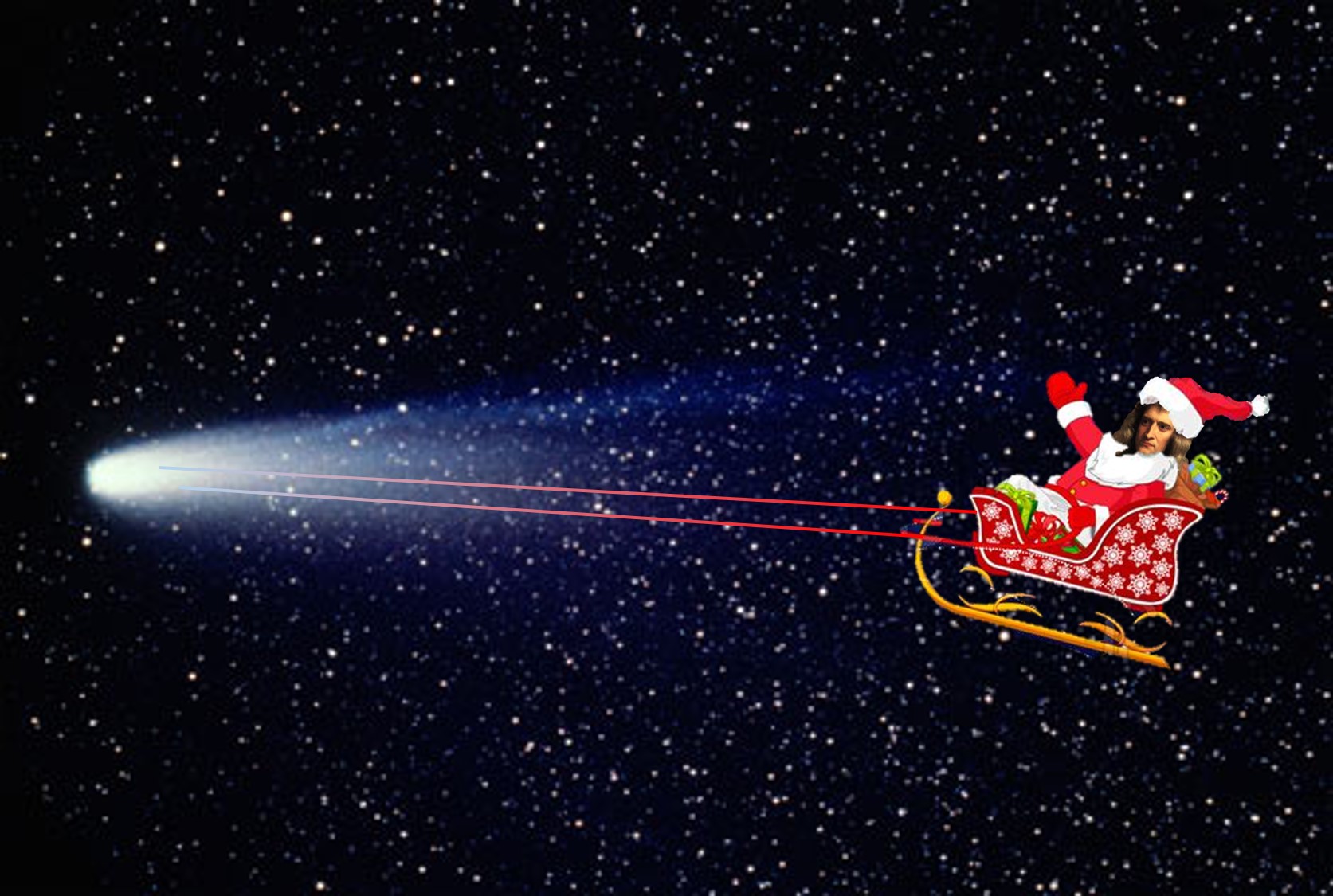Halley’s Comet and Christmas Day
Kirsten Walsh writes…
Hello Readers!
Since this is our last post for the year, and the holidays are almost upon us, I thought I’d tell you a Christmas story:
On Christmas day in 1758, Johann Georg Palitzsch, a German farmer and amateur astronomer, became the first person to witness the return of, what would become known as, Halley’s comet.
Halley’s comet is the only short-period comet (i.e. comet that completes an orbit in under 200 years) that is visible with the naked eye. It has featured in astronomical reports since at least 240 BC. However, it wasn’t until 1705 that it was recognised as the same object. That year, the English astronomer Edmund Halley determined the periodicity of the comet, writing about it in his Synopsis Astronomia Cometicae. With the help of Newton’s theories of elliptical orbit, Halley had studied the data of the comets that had appeared in 1531, 1607 and 1682, and recognised that they all followed similar paths. He made a rough estimate that the comet would return in 1758.
Halley died in 1742, and so he never saw the return of the comet. But Palitzsch’s Christmas day observation confirmed his claim that, indeed, there was a comet, visible by the naked eye, that had period of approximately 76 years. It was the first time anything other than a planet had been shown to orbit the earth. In 1759, the French astronomer Nicolas Louis de Lacaille named the comet after Halley.
This prediction counts, not only as a confirmation of Halley’s theory, but also of Newtonian physics, and of the mathematico-experimental method more generally. It seems fitting that this confirmation happened on the 116th anniversary of Newton’s birth!*
We at Early Modern Experimental Philosophy wish you a happy holiday. We look forward to hearing from you in 2014!
*Actually, Newton was born in England on 25 December 1642, but Palitzsch saw Halley’s comet in Germany on 25 December 1758. Until 1752, England used the Julian (‘Old Style’) calendar, whereas Europe had adopted the Gregorian (‘New Style’) calendar much earlier. There is a 10-day difference between the two calendars, so Newton’s birthdate adjusts to 4 January 1643 on the Gregorian calendar. So while both events happened on Christmas day, they happened on different Christmas days. (Also, I hope you will forgive me for this picture, that I couldn’t resist posting!)


